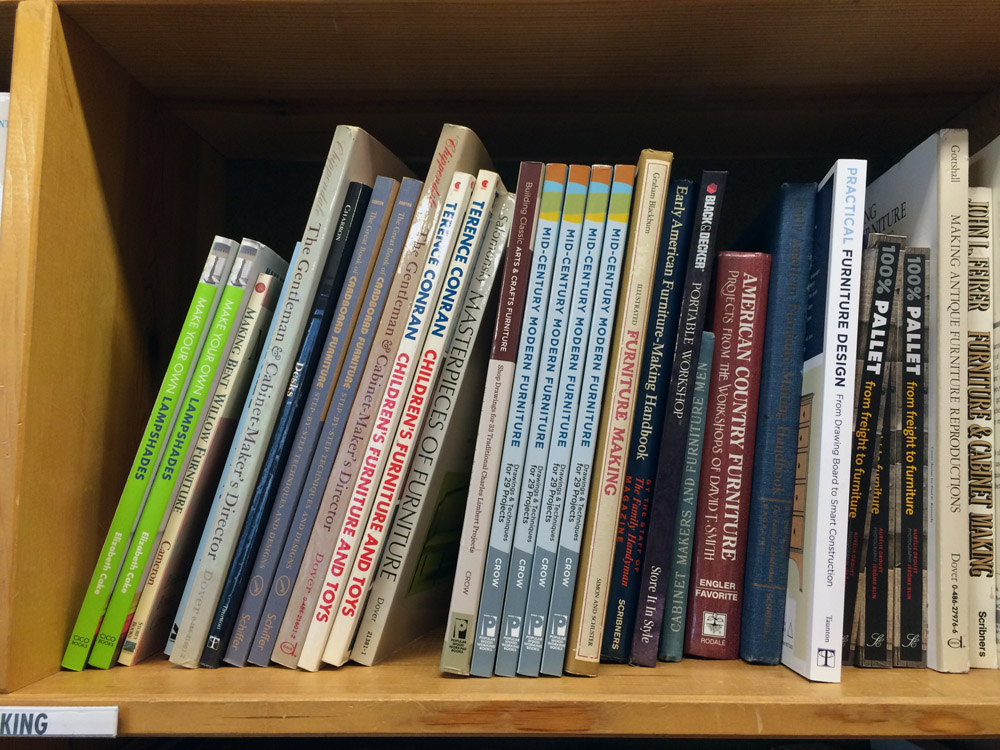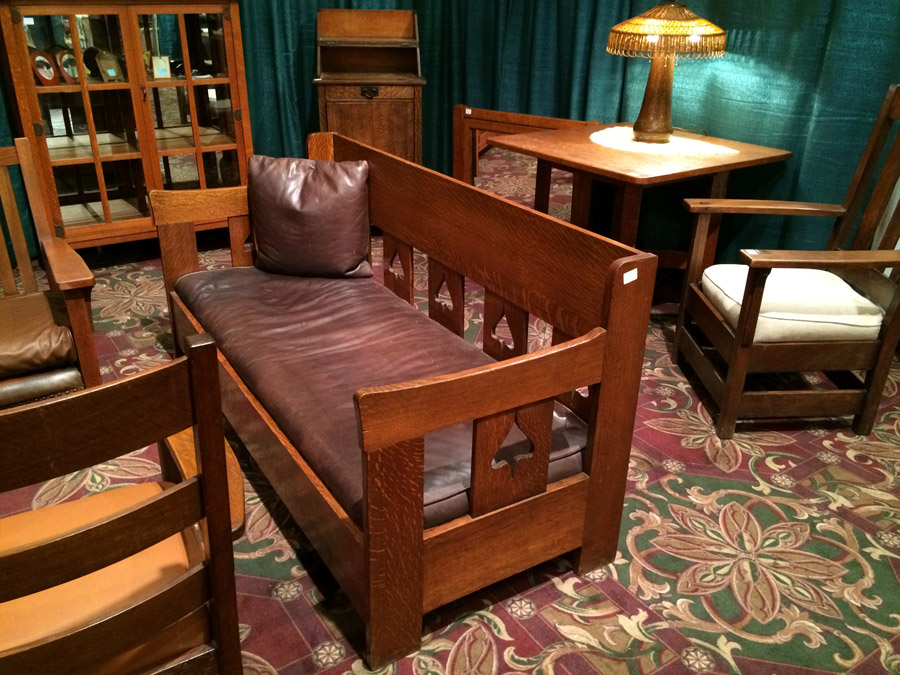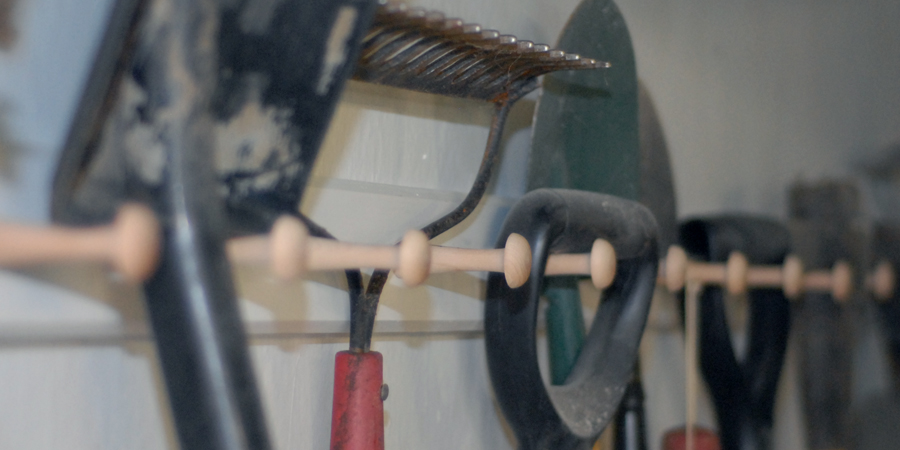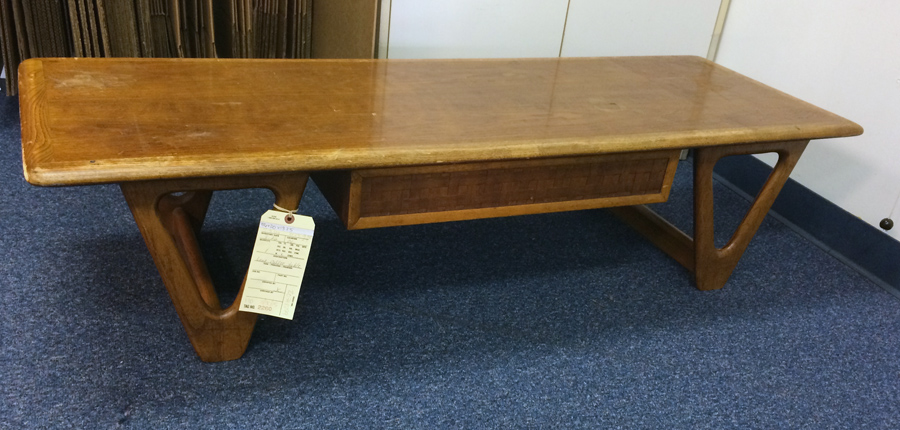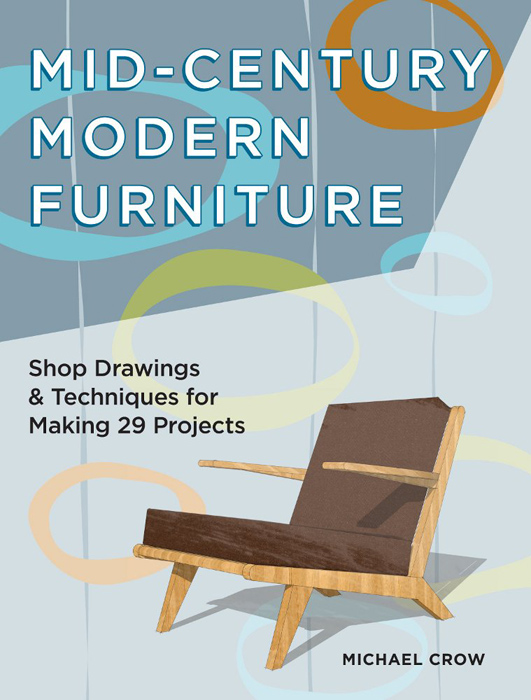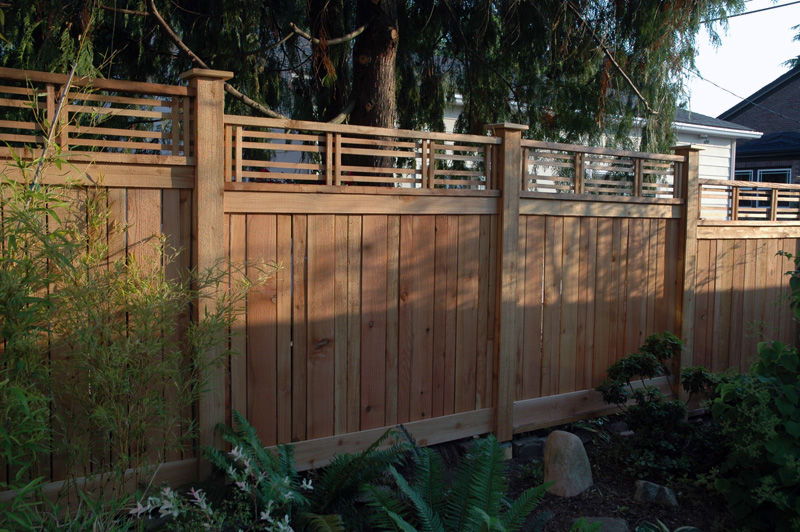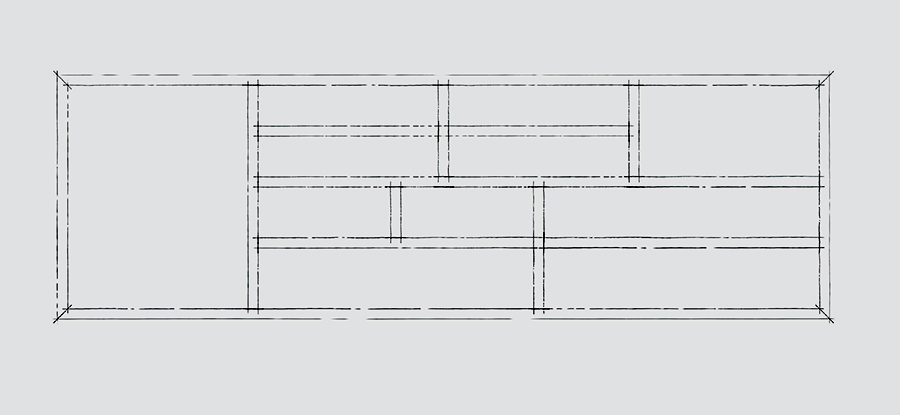A trip to Portland this weekend meant we could admire the Craftsman homes in Hawthorne and browse for books at Powell’s. There’s been some substantial rearrangement since we were there last, but I was able to find the woodworking section eventually and was pleased to see my books on Limbert Furniture and Mid-Century Modern furniture on the shelf.
Mid-Century Modern Timeline
I was looking for an excuse to play around with Knight Labs’ Timeline JS, and Mid-Century Modern seemed like a good subject. It can take a while to load, but it’s pretty neat, and assembling a timeline isn’t too difficult.
Limbert Settle
One of the benefits of attending the Arts & Crafts conference at the Grove Park Inn earlier this year was being able to see a lot of period furniture in person. Although I wrote a book on Limbert’s furniture, I haven’t had the opportunity to see much of it in the wild, a deficit I was able to close at the Grove Park Inn. The Inn itself features a fair amount of Limbert, and there were some fine pieces offered for sale in the dealers’ room, including this early settle.
Shaker Peg Board
I’ve wanted some method for storing yard implements for some time, but I wanted something with more appeal than the utilitarian plastic and metal options available. I finally decided that Shaker peg board would make a nice alternative. I ordered some maple pegs online, but only afterward did it occur to me that even my best free-hand drilling attempts were likely to leave the pegs at least slightly off-center and a bit splayed. So I deferred and other projects intervened until I had access to a drill press and was ready to build. Consulting Thomas Moser’s How to Build Shaker Furniture and John Shea’s Making Authentic Shaker Furniture, I decided on a three-inch wide board with the pegs set 6″ on center.
Actual construction went quickly. After ripping some poplar to width, I planed away the machine marks on the show side of the board, ran a chamfer around its perimeter and hit it with a quick pass of 220 grit sandpaper before priming and painting. I then marked the location of the pegs using dividers and a square, then drilled them out with a 1/2″ Forstner bit. I had contemplated different fastening techniques, ranging from a French cleat, to plugged screw holes, when it occurred to me that each peg was an effective plug. So I drilled pilot holes in every few peg holes, positioned the board on the wall, and marked the concrete wall. Even with a hammer drill, it took some time to drill holes for masonry anchors. With the anchors finally set, I screwed the board to the wall and tapped the pegs into place with a wooden mallet.
Tansu-Inspired Tool Chest–Construction

Modern construction techniques belie a design inspired by tradition. Locking miters join the case and dadoes house the many dividers.
With the front of the case divided into doors and drawers, I was ready to begin construction. Construction of the cabinet provided an opportunity to clear out the 1/2″ cherry veneer plywood I’d accumulated over the course of several projects. Continue reading
Danish Modern Coffee Table
This Danish Modern coffee table caught my eye while I waited in line to ship a package today. Especially interesting to me are the V-shaped trestle legs and the front on the suspended drawer. The drawer front features a basket weave pattern I don’t think I’ve seen before.
Mid-Century Modern Furniture available for pre-order
Amazon now has a listing for my forthcoming book, Mid-Century Modern Furniture. While I’ve seen the insides of the book in their laid-out glory, this was my first look at the cover. I like it. You can click through to preview the table of contents and introduction on Amazon. In addition to dimensioned drawings, the book includes a historical overview of the period and step-by-step builds of variations on a coffee table by Finn Juhl and book case by Børge Mogensen. Selecting the pieces was a bit of challenge since my intent was to include interesting designs that could be recreated in the home shop, a constraints which eliminated a lot of fine work that relied on industrial processes for construction.
Mid-Century Modern Furniture is due out in June.
On Newsstands Now: Fences and settles
There may come a time when having an article in print ceases to be a novelty for me, but I’m still thrilled to see my own byline, which is happening not once, but twice right now. The March/April issue of Woodworker’s Journal features my article on building the L & J. G. Stickley No. 220 Settle (see an introductory video here). The April/May issue of Fine Homebuilding includes my article on building “A Privacy Fence With Appeal.”
Tansu-Inspired Tool Chest–Design
The footings of my foundation extend inward about 16 inches at the back of my basement, forming a shelf-like space below the window behind my workbench. It’s a convenient space, but it tends to collect everything–tools, glue, fasteners, dust, etc. So I’ve been contemplating another tool chest build to fit the space (roughly 12″h x 38″w X 12″d) for some time. Since I’m in between projects, it seemed like a good thing to do; it would also let me clear some of the cherry plywood leftover from my last couple of Mid-Century Modern Builds. Since I’m also working on a class on tansu design and construction for Popular Woodworking University, I’ve had asymmetrical case design on my mind. After some iterating in SketchUp, I think I’ve settled on this basic layout: cupboard on the left, many drawers on the right. Many drawers. Many, many drawers . . .
Charles Limbert Bibliography
I’m posting a short bibliography concerning works related to Charles Limbert and the Company he founded in advance of my 22 February talk on “The Mysterious Mr. Limbert” at the 2015 Arts & Crafts conference in Asheville, NC.

